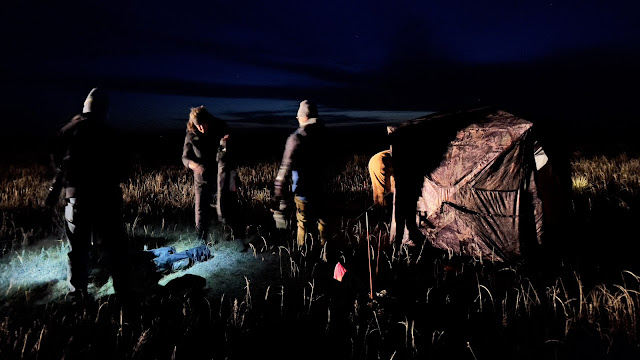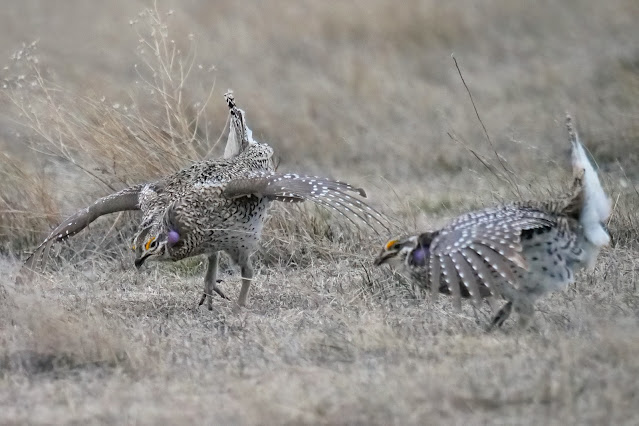Setting up the Blind
Here we are setting up a blind, or a hide some call it. Basically it is a pop-up tent secured to the ground with tent poles to keep it from blowing away in the wind. Which eventually happened anyway. It has a number of windows so we could photograph birds from inside but those windows are open portals letting cold winds enter. We dressed very warmly.
The purpose of a blind is to make us less conspicuous to the birds we are photographing and best allow the grouse to maintain their natural behavior. By no means do we wish to disturb or alter the courting and mating process. We are here to witness and document activities and better tell the story of declining grassland birds, birds who call prairies their home and who have lost 53% of their population over the last 50 years due to climate, habitat loss and other factors.
To avoid any disturbance, is necessary to set up the blind before birds arrive at the lek. So we arrive at our destination and make sure to be comfortably set up inside the blind at least a half hour before the birds fly in. How do we know when the birds will arrive? By working with knowledgeable individuals who know grouse habits. Christine and I have been researching, making connections and studying grouse species for a year now. But even with all those resources, we are amazed by the age old mating courtships we are witnessing.
Our movements in the blind are controlled and slow to keep noise at a minimum. No flash, no cell phone alerts, no talking, sneezing or coughing. And I might add, don't drink much before or during your time at the lek. You'll be sitting for hours with no access to facilities. Plan accordingly.
The following video marks the arrival of sharp-tailed grouse at a lek in Nebraska before we can see them. Sound up and see if you can hear the booming.





I enjoyed these videos. Your tenacity is admirable in chasing these birds. - Robert C.
ReplyDeleteIt is such an interesting experience.
DeleteRobert, you call it tenacity. We call it crazy!!!!
Delete